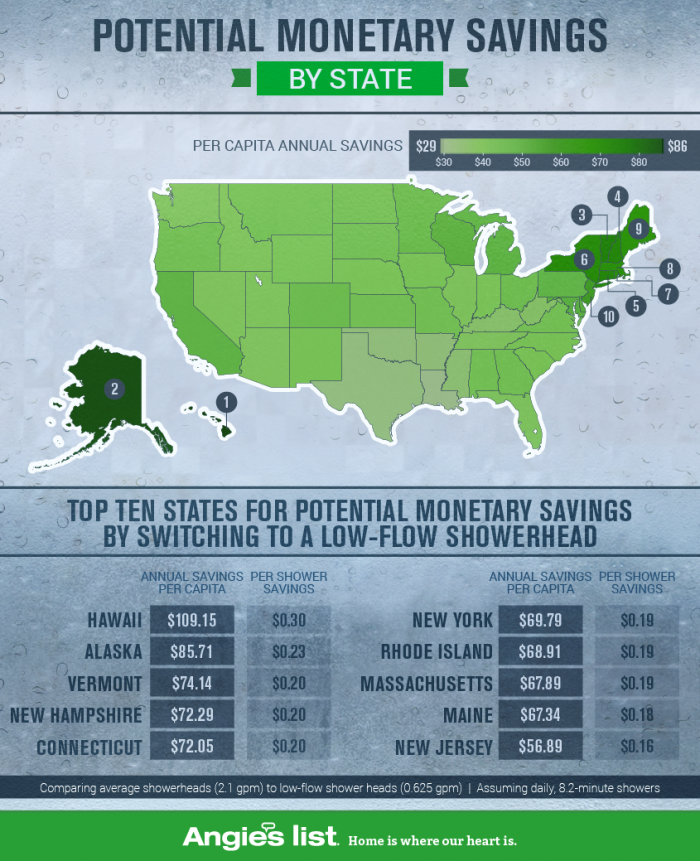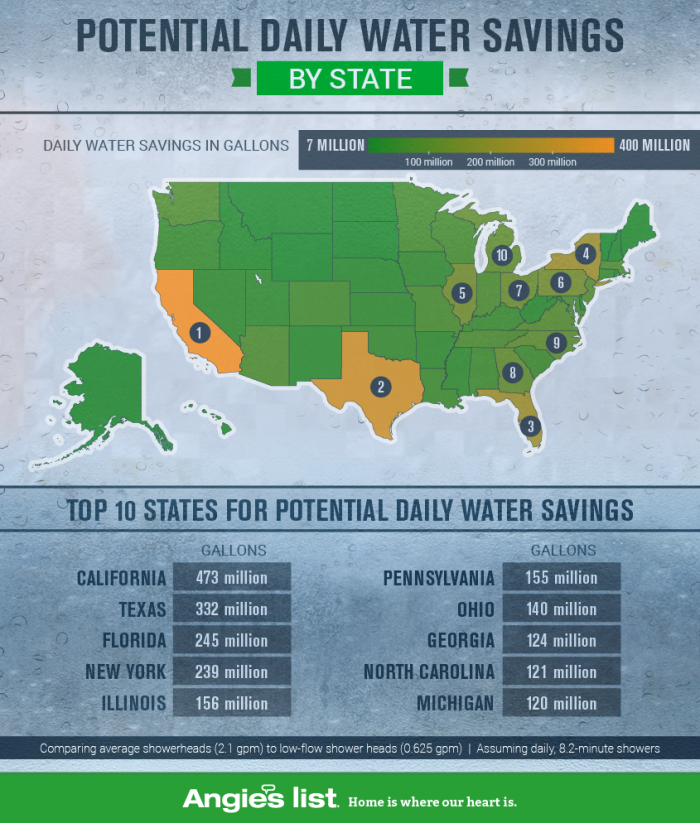Low Flow Showerhead Savings Calculator
Water conservation is as important as ever, and there is simply no easier, more affordable way to use less money at home than by switching out a home's normal showerheads with newer, low flow showerheads. Now a new calculator from the good folks at Angie's List is making it easier than ever to figure out exactly how much water, and money, homeowners can save by switching.
New designs have made low flow showerheads perform better than ever, making it harder than ever to find an excuse not to use them.
As we have noted in previous water conservation articles and pieces on low flow showerheads, the potential to save enormous amounts of water every single day, all year long. Depending on the state, potential savings can reach into tens of thousands of gallons, and hundreds of dollars, per year.
While new showerheads do require a bit of money to purchase, their amazing water and energy savings will recoup those purchase costs very quickly, often in a matter of a few months.
How Much Water Can You Save?
The calculator is simple to use; simply enter the number of showers your household takes a day, the type of energy used to heat the water, and your zip code, and the calculator does the rest. Prepare to be shocked at how much water you could very easily be saving. And the money! While any showerhead using 2.5 gallons per minute (gpm) can be labeled as 'low flow,' many models available today use much less, with good performance. Angie's List uses the following methodology to calculate savings: Methodology: "All calculations regarding a low-flow showerhead are assuming a flow rate of .625 gpm. When comparing low-flow with max-flow conventional showerheads in the first graphic, we assumed a maximum flow rate of 2.5 gpm. When computing the potential savings, we assumed daily showers and used an average shower length of 8.2 minutes along with an average flow rate of 2.1 gpm. When calculating energy savings, we established the average temperature of groundwater in each location by looking at the average air temperature — these two quantities are known to be approximately equal (www.ngwa.org). Once we had the temperature of the groundwater, we calculated the amount of energy required to raise the water to 112º F, a typical temperature for showers. Using a market profile of water heaters, we established that the split of water heaters is approximately 59% gas and 41% electric. We then calculated the potential regional savings based on usage, along with local data for electricity and natural gas. Per capita savings were computed using Census estimates for population. Lifetime savings were estimated given a life expectancy of 78.8 years and assuming daily, average-length showers starting at age 10."
With all that said, plug in your info and see what you can save!





























































































































































































